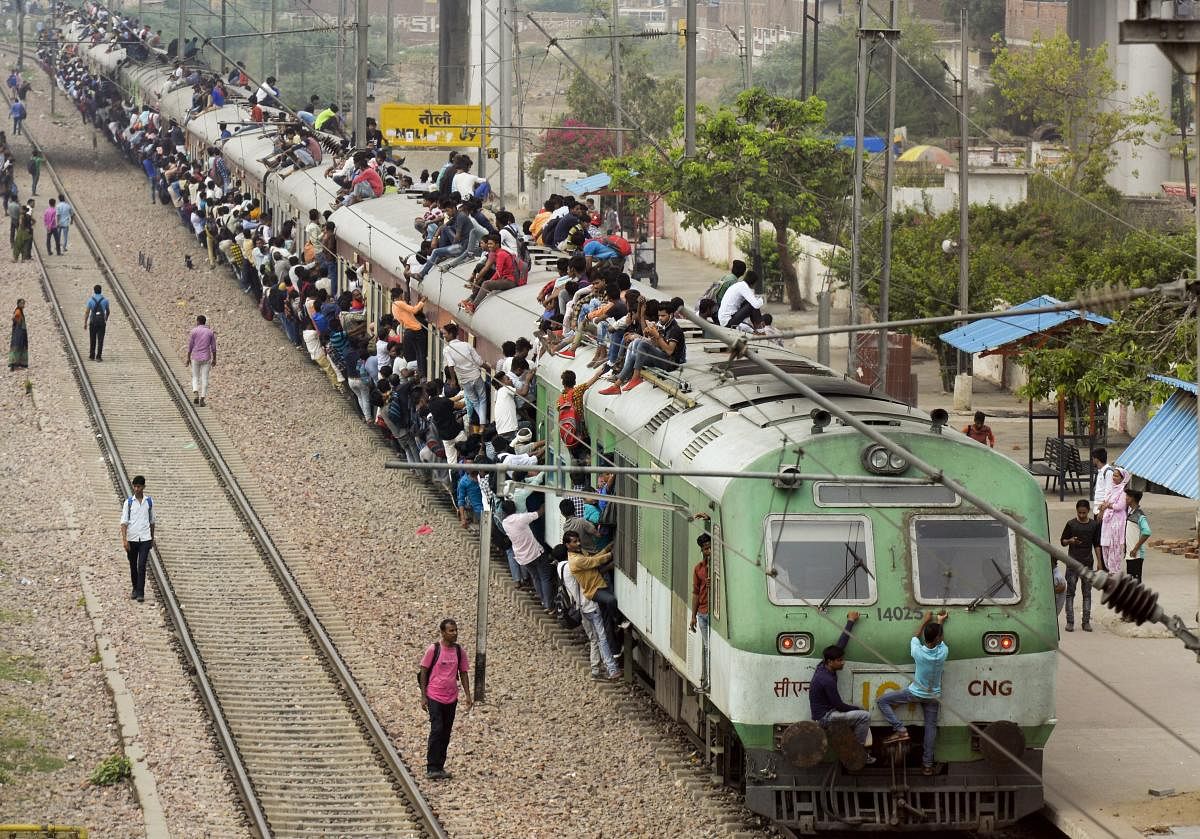
Amid concerns over the huge costs involved in replacing diesel-based assets with electric ones, the government has reversed its earlier decision and decided that the cash-strapped Indian Railways has to electrify 100% of its network within 3-4 years. That is a huge strategic shift that needs a rethink. Who will pay for the additional loco cost and what will happen to the condemned locomotives?
The decision by the Cabinet Committee on Economic Affairs (CCEA) last month to go ahead with 100% electrification comes six months after Prime Minister Narendra Modi raised concerns over Railway minister Piyush Goyal’s move to push through with the policy. Modi red-flagged a few issues in a high-level meeting, including apprehensions over the premature idling of in-service rolling-stock assets from the diesel stable.
The CCEA has approved the Railways proposal for electrification of broad gauge routes comprising of 108 sections covering 13,675 route kilometres (16,540 track kilometres) at a cost of Rs 12,134 crore. Along with the electrification of 17,000 km cleared earlier, the aim is to complete the whole project by 2021-22.
The argument for electrification is that it will reduce railways’ fuel consumption cost by over Rs 10,000 crore per annum. Eliminating diesel consumption will reduce demand for crude oil and hence reduce the import bill. In addition, it would reduce the Railways’ carbon footprint and make the rail corridor green.
But experts say it could prove to be a costly exercise the Railways can ill-afford. It’s unclear whether India’s existing power infrastructure is in a position to cater to the increased demand for electricity it will bring about. Besides, the 100% electrification will require substantial investment to replace the national transporter’s existing diesel locomotives and phase out the existing ones in use, besides ensuring an additional 2000 MW of power to run electric locos.
According to this view, 100% electrification is not required. Only main trunk routes and important branch lines should be electrified for effective rail operation. “Railways has already invested in modernising its diesel locomotive factory, and a new one is coming up at Marhowra in Bihar. How do you justify that?” ask former Railway Board members.
The Marhowra project, a joint venture between Railways and General Electric to supply and maintain modern diesel-electric locomotives of 4,500 horse power (HP) and 6,000 HP, was announced in November 2015. GE is to supply 1,000 locomotives as per the contract. The first GE locomotive, as part of the $2.5 billion, 10-year contract, has already arrived in India.
Experts say that both diesel and electric locos have their own advantages and there must be a balance between them. Complete electrification would be a huge and unnecessary shift to make given that for years, both diesel and electric traction co-existed. As a result, substantial assets for both these traction technologies have been created over time, including rolling stock, factories, maintenance workshops and a nationwide supply chain ecosystem.
The decision to now officially go with 100% electrification raises many questions: for one, how will the money be arranged to acquire some 5,000 additional electric locomotives to replace the existing diesel locomotives?
A report submitted to the rail ministry earlier this year by economist Bibek Debroy, titled ‘Mission 100% Railway Electrification: Need for a Strategic Re-Think’, which collated a set of concerns, has noted that the actual cost of shifting to a 100% electric network could be as high as Rs 1 lakh crore, including the costs of route electrification, acquiring additional electrical locomotives to replace the diesel fleet, and the loss of the holding value of the existing diesel locomotive fleet.
There are about 5,800 diesel locomotives and 5,300 electric locos. Currently, about 36% of the total route kilometres is being electrified, which is about 30,212 route km out of a total 66,687 route km.
The complete phasing out of diesel locos will require electrification of a large number of private sidings. Many of these private sidings, with little traffic, may not agree to additional capital expenditure for electrification, leading to diversion of goods to road traffic. The total capital expenditure for electrification would be at least Rs 35,000 crore over the next 4-5 years. Besides electrification cost, replacing the diesel locos with electric ones will cost Rs 40,000 crore.The asset holding value of existing diesel locos would likely be around Rs 15,000 crore after taking into account the average depreciation value. To pay for all this, the Railways may have to raise loans, which will saddle it with the burden of interest payments.
It’s a myth that electrification of tracks and locos by itself will help reduce the Railways’ carbon footprint. If the power needed for a fully electric railway network comes from polluting sources of power, such as coal, which is the mainstay of Indian power plants, the Railways would then cause a higher overall emission than if it were a pure diesel network. To be green, the electric network would have to derive power from nuclear or hydroelectric sources.
Moreover, about 75% of the country’s coal demand is currently met from domestic production. The deficit of 25%, which amounts to about 200 million tons, is imported. Creating additional power demand will again cause recurring outgo of foreign exchange.
Diesel traction helps Railways put those areas on the rail map where putting up electric traction would be difficult. States with difficult/hilly terrain such as Jammu and Kashmir, the Northeast states and western Rajasthan are examples. Moreover, in case of a major power breakdown, Railways must maintain availability of diesel traction and locos to run rescue operations.
According to worldwide trends, freight-dominated railway networks generally prefer diesel, while passenger-dominated networks prefer going electric. Therefore, there are good and sufficient reasons for a deeper economic, environmental and risk management analysis before the Railways jumps headlong into electrification.
(The writer is a Delhi-based senior journalist)